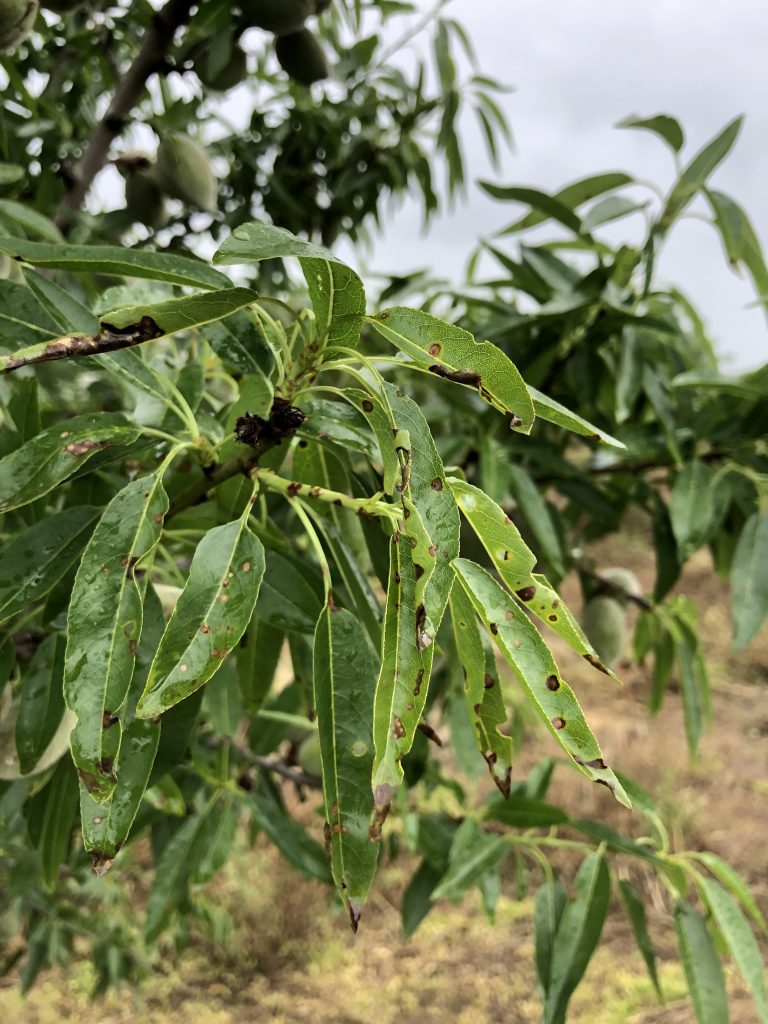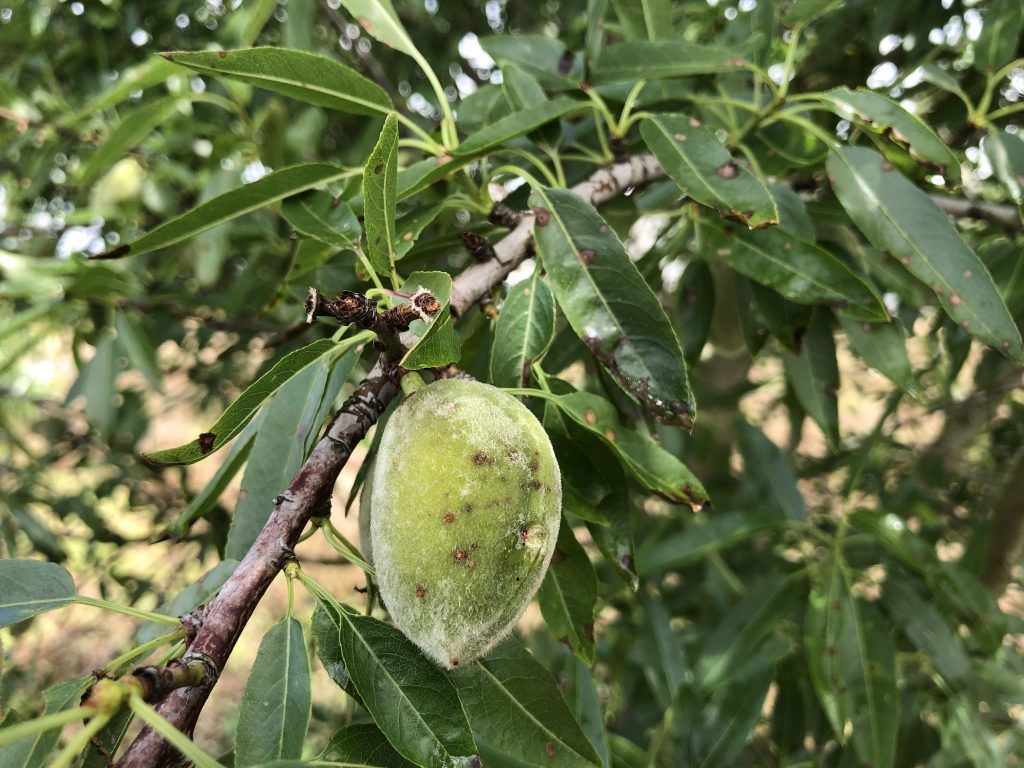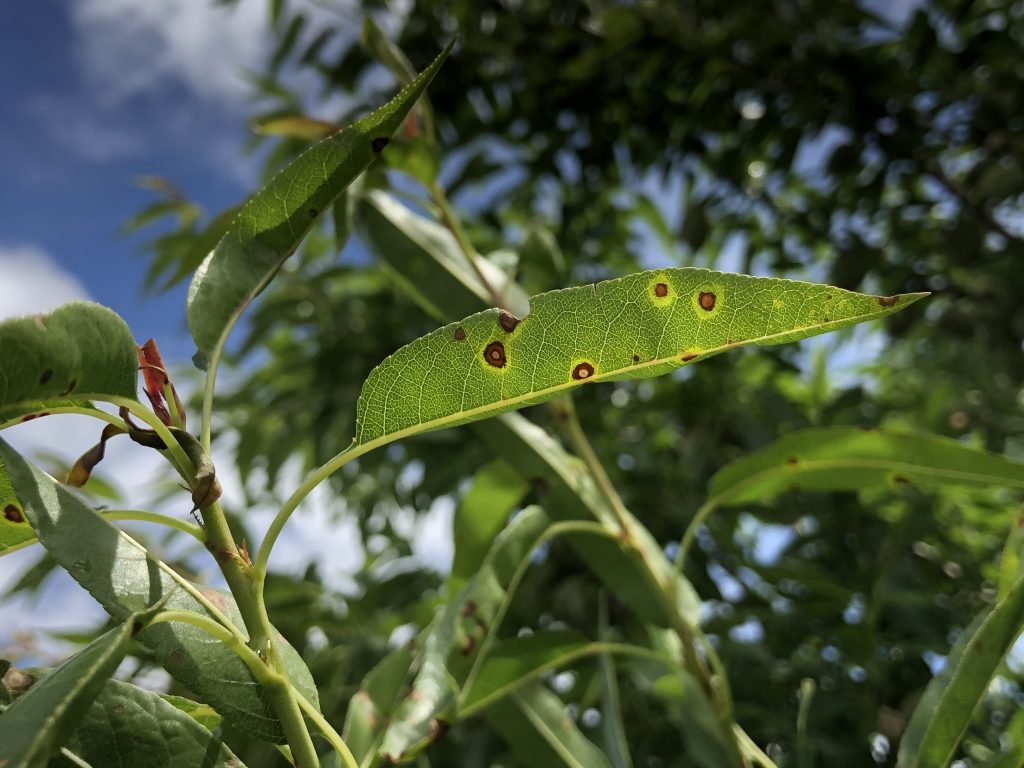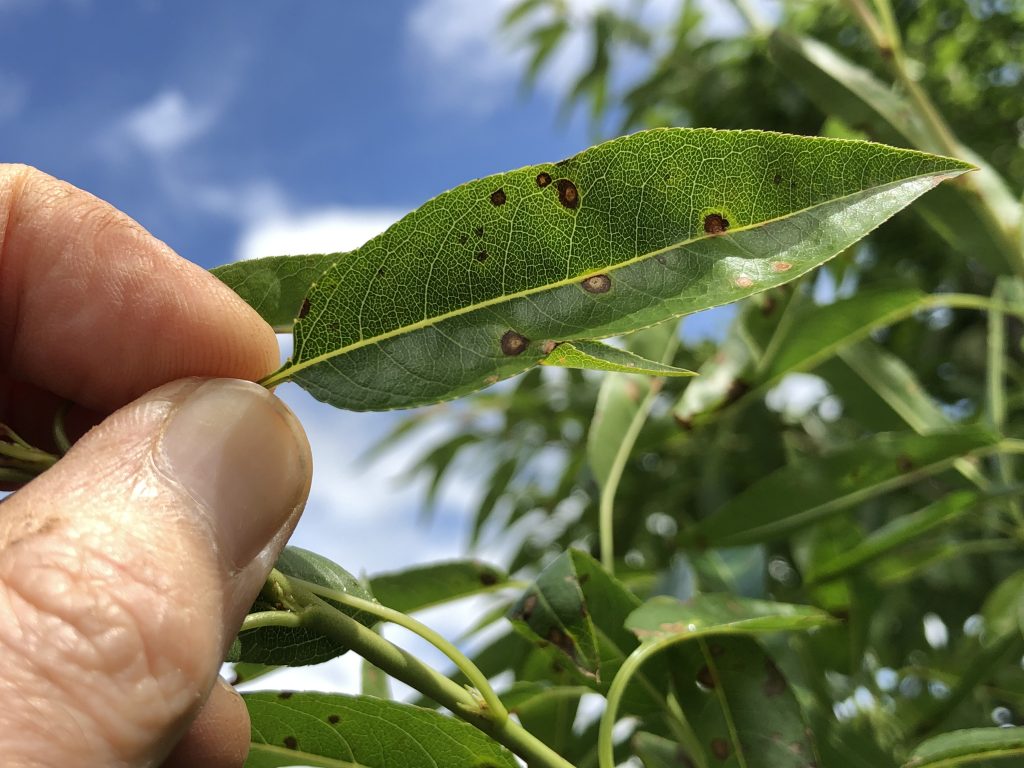Shot Hole is a fungal disease caused by Wilsonomyces carpophilus. The disease is able to infect leaves, fruits, and green wood. Leaf infections are characterized by a lesion that is between 1/8″-1/4″ (3-6 mm) in diameter, with a definitive yellow halo. Often, the lesion has a small black fruiting body in the center. As temperatures warm, the lesion drops from the leaf, leaving a hole. Fruit infections are generally smaller in diameter (~1/8″), appearing purplish-brown, slightly cork-like in appearance, and are raised. Severe fruit infections can kill the developing nut or cause deformities, impacting quality. Twig infections are similar to fruit infections. In severe cases, multiple lesions may girdle the green branch, causing dieback.

This disease is very common in almond producing areas around the world. It survives/overwinters on infected twigs and as spores within leaf buds. Infection occurs when there is ample moisture and temperatures above 36F/2C. In warmer conditions, the fungus can produce spores and infect leaf tissues in less than 6 hours. Multiple infection cycles can occur within a season due to re-occurring rain events, which can cause severe defoliation.

Due to the requirement for leaf wetness, this disease tends to be more prevalent in production areas that have significant rainfall after leaf-out. Frequent periods of leaf wetness that are greater than 6 hours will increase the risk of disease. In order to prevent infections, fungicides should be applied prior to rain events. These products kill the spores as they begin to germinate, reducing the number of infections. If rainy periods persist, multiple fungicide sprays will be needed. For more information on control, please see the Univ. of California Integrated Pest Management website. It highlights the life-cycle and fungicide chemistries to utilize for control.

When diagnosing, be aware that there are a lot of problems that look similar to Shot Hole. These include herbicide drift, micro-nutrient phyto-toxicity, and insect damage. The differentiating symptoms of Shot Hole is the presence of the black fruiting body in the center of the lesion. If the fruiting body isn’t present in the lesions, it probably isn’t Shot Hole.

This disease use to be relatively common within California. Over the past few decades, however, less Shot Hole has been observed within orchards. This reduction is most likely due to the increased efficacy of modern fungicides.

